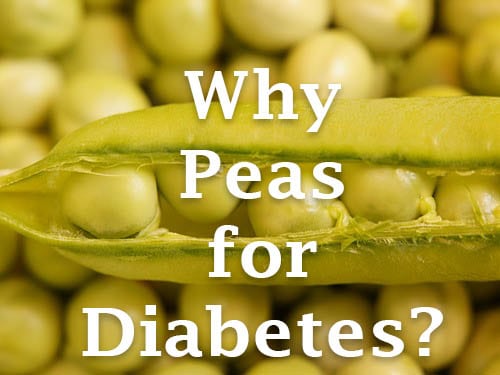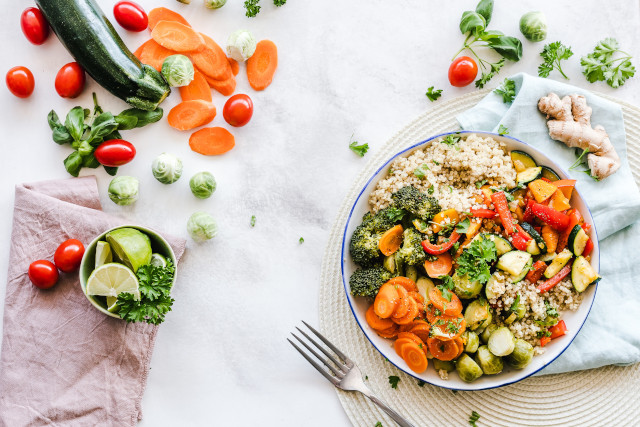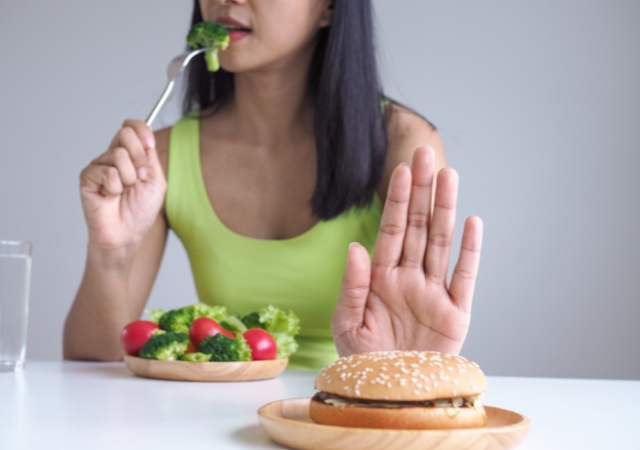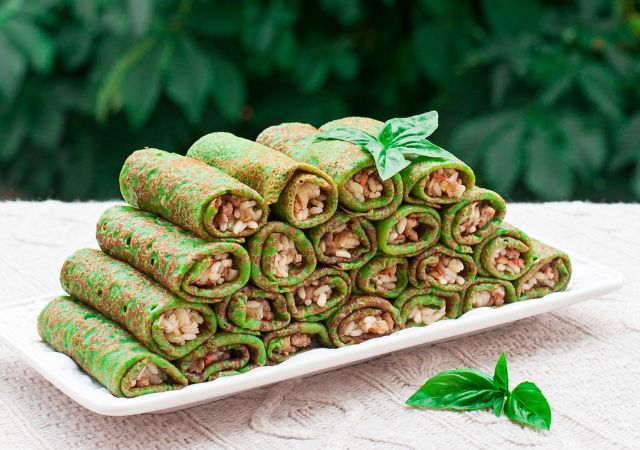
Peas are botanically a fruit, though most of us think of peas as vegetables. They are part of the legume family which also include lentils, chickpeas and black beans.
There are many types of peas including:
- Green peas: These are the most common type and come in a number of different varieties such as spring peas and garden sweet peas. The pod is inedible in most varieties of green peas. Green peas should be cooked before eating.
- Snow peas: Snow peas have a flat, edible pod and are also known sugar peas. Snow peas can be eaten raw or cooked.
- Snap peas tend to be the sweetest peas and both the peas and pods can be eaten raw or cooked. The pods tend to be plumper than in other varieties of peas.
Nutrition Facts About Peas
All the varieties of peas have a similar nutritional profile. Peas have a very low estimated glycemic load of 3. They are low in saturated fat and cholesterol. 1 cup (98 grams) of peas has 41 calories, 4 grams of total sugars and 3 grams of dietary fiber.
73% of the total calories in peas comes from carbohydrates with 23% of the total calories from proteins—only 4% of the calories in peas is derived from fats (primarily omega-6 fats with some omega-3 fats). However, you should notice that a good percentage of the calories in peas do come from carbohydrates—these are mainly complex carbohydrates, but that fact is worth mentioning.[1]
Peas are great sources of Vitamin C, and good sources of Vitamin A, K, B vitamins and choline. They also contain minerals including calcium, iron, magnesium, phosphorus, potassium, zinc, copper, manganese and selenium—and no sodium.
Pea Protein
There has been a good deal of interest in using pea protein as a source of protein. It is an incomplete protein, meaning that it does not contain all the amino acids needed by the body to make new proteins. One of the main advantages of pea protein is that they are purely plant-based protein and avoids all animal products.
Other advantages include a low risk of allergy and that pea protein contains branched chain amino acids—this is a type of amino acid that appears to be important in muscle building. In fact, a good deal of information on the internet is all about using pea protein for body building.
Pea protein does have some disadvantages, however. For example, it contains purines—a substance you should avoid if you have gout. Also, as usual, the quality of the pea protein can also be an issue—if proper care isn’t taken during processing, it can be contaminated with fertilizers and pesticides.
I recommend reading these articles for diabetes tips:
Including Peas in a Diabetes Eating Plan
The simple answer to the question “should I include peas in my diabetes diet plan?” is yes! Especially if you stick with fresh peas! Avoid the canned peas (with added sodium and possibly preservatives), though frozen peas should be fine too.
Some might ask why eat peas if most of the calories come from carbohydrates in peas and that since peas are a starchy vegetable, shouldn’t they be avoided? (Starchy vegetables contain more carbohydrates). The answer to this question is a bit more complicated, but here goes.
Calories are not the only issue to consider—yes, about ¾ of the calories in peas come from carbohydrate, but the carbohydrate is complex and not simple carbohydrates.
That, plus the fact that when you eat peas, you also eat the fiber. And—fiber tends to slow down the absorption of the carbohydrates, so peas will not likely give that spike to your blood sugar—the sugars will take a longer time to be released.
Just as we shouldn’t decide on a food just based on calories, even the “nutrition data” given above is really not enough because most sources of nutrition data do not include things like antioxidants—and peas are very high in antioxidants—meaning that peas can be helpful in reducing the amount of inflammation in your body—and in diabetes, that IS a good thing.
Peas also have both a low glycemic index (22) but, more importantly, the glycemic load is very low. Glycemic load takes into account the total amount of carbohydrate in a food (glycemic index doesn’t) so that low glycemic load indicates that the sugars are released more slowly than in other foods.
How to Enjoy Peas
Peas can be added as a side dish (eg. Cooked green peas) or raw in salads or as a snack. They can also be included in soups and stew. Green peas have to be removed from their pods, but snap and snow peas do not—just add to your meal either chopped or whole.
Fresh peas are always best, but they may have a short season, with many of the peas available either being frozen or shipped long distances. Look for peas with shiny, bright green pods that are firm to the touch.
If you have any questions regarding peas in your diet post them down below.
TheDiabetesCouncil Article | Reviewed by Dr. Christine Traxler MD on June 09, 2020





